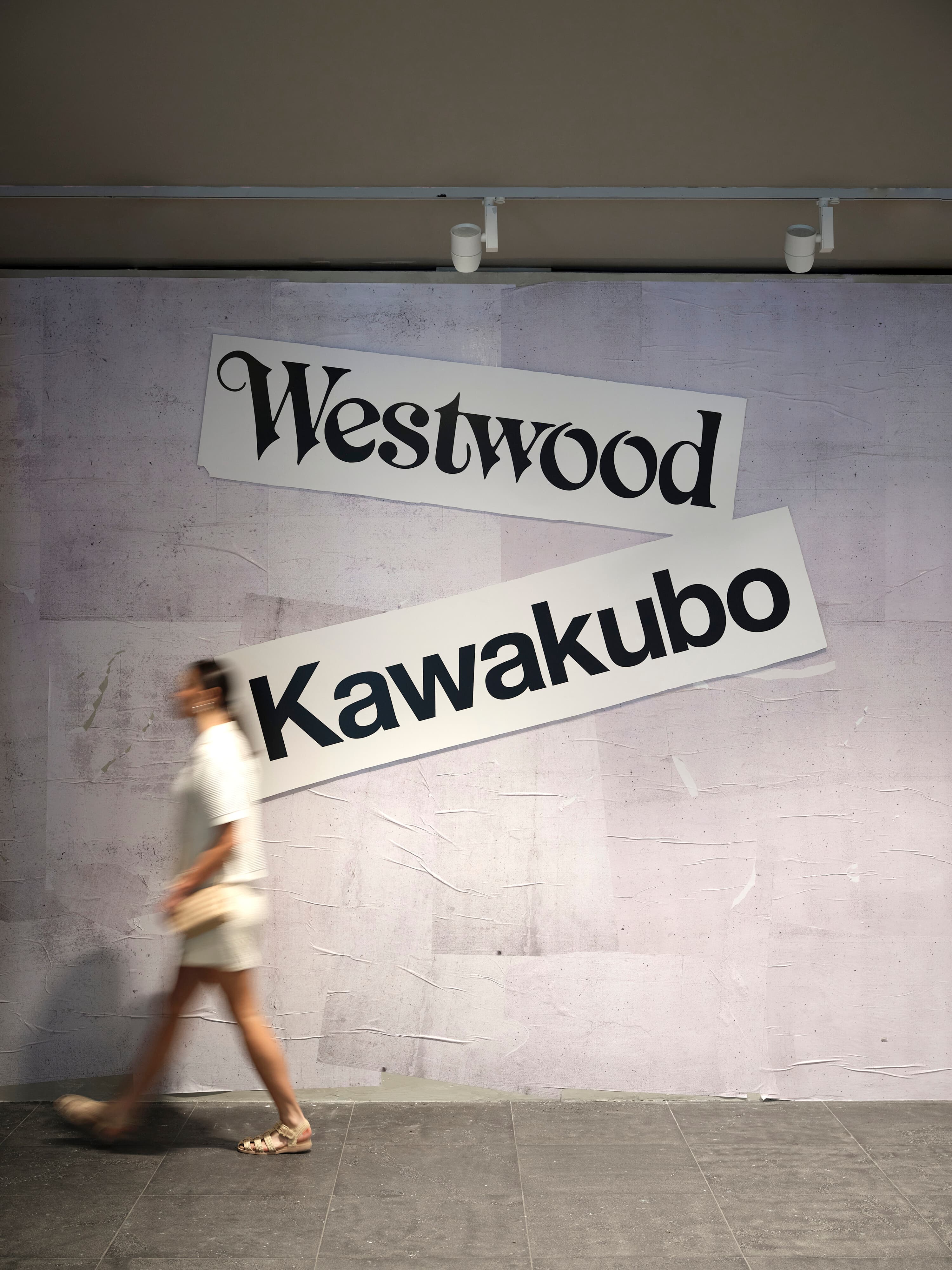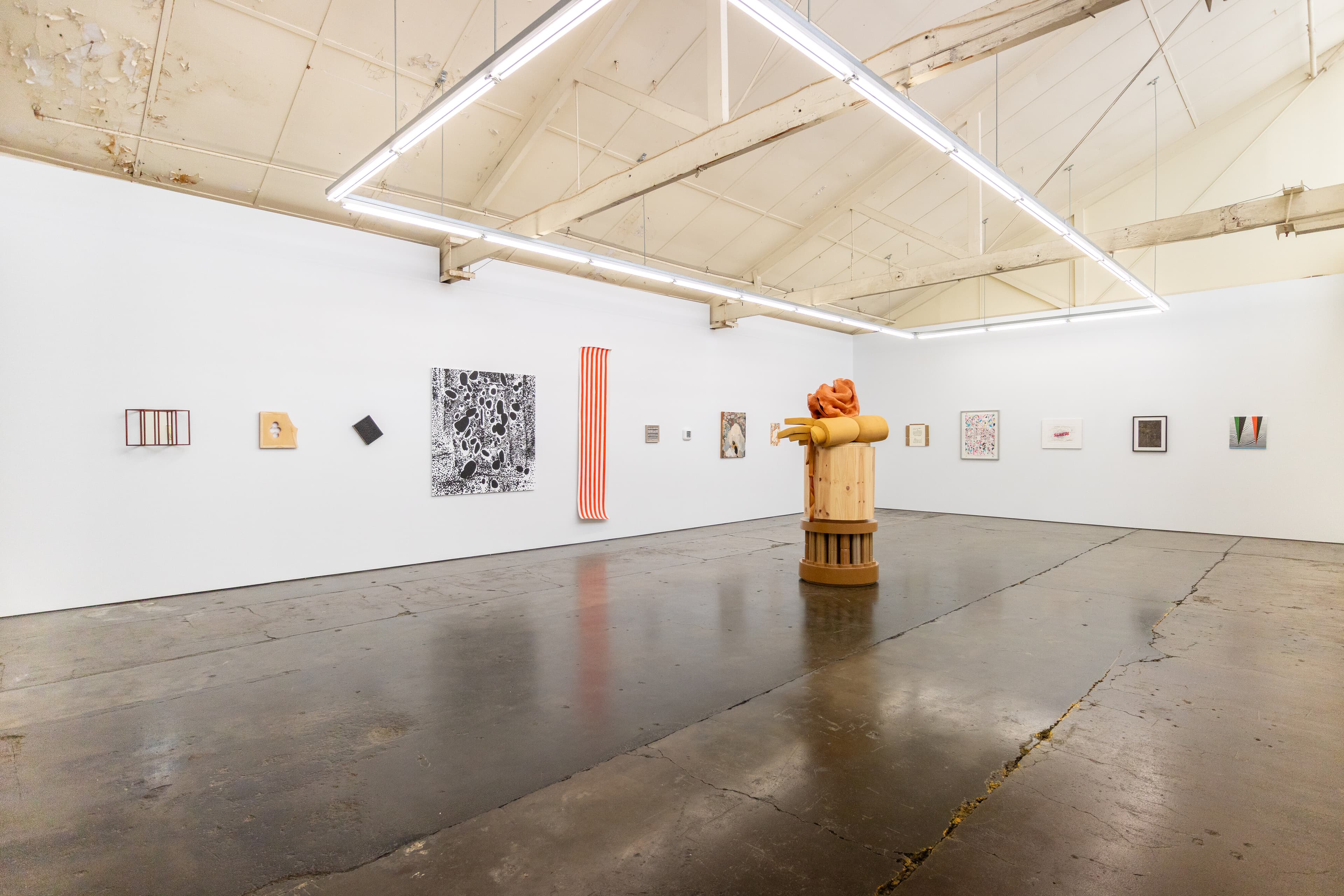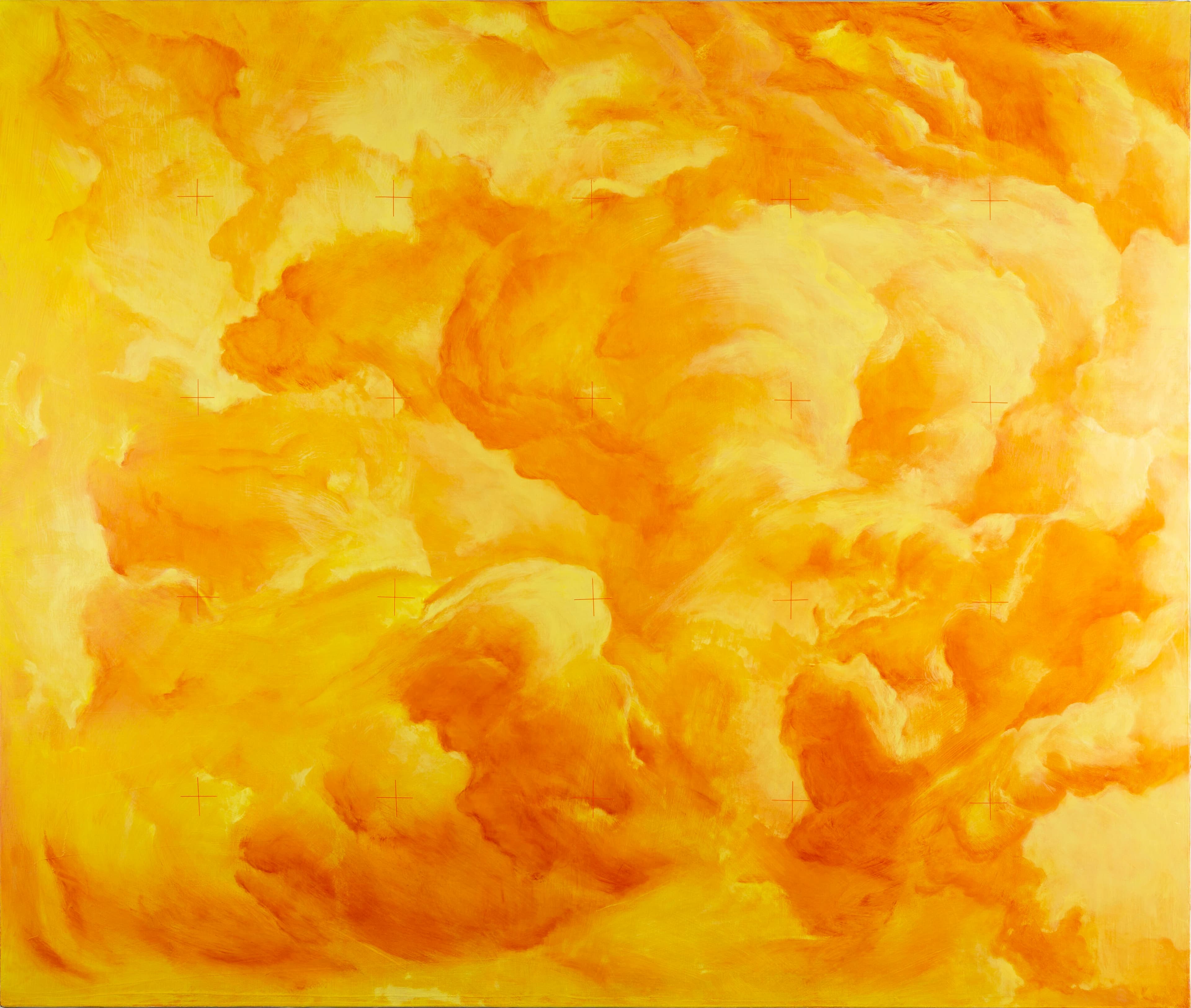Venice, 2024. Photo: Helen Grace
Venice Biennale
Helen Grace
Each afternoon during the 2024 Venice Biennale vernissage, fierce storm clouds gathered over the city, threatening an awe-filled tempest. But each time, only a little rain fell, and the weather cleared. In its one-hundred-and-thirty-year history, many storms have gathered around the Biennale. Yet the clouds have always dissipated, and the exhibition persists as a major global art event despite its outmoded framework of competing national pavilions and the vision of the world this implies.
If a function does remain for the Biennale, it may be that it can provide a backdrop against which other visions of the world might emerge. This year, that potential is shaped by the Brazilian curator Adriano Pedrosa and his theme, Stranieri Ovunque—Foreigners Everywhere (2024). Pedrosa is the Biennale’s first curator with a predominantly Global South career (though Okwui Enwezor was technically the first Global South curator by origin, his career was largely in the Global North). Meanwhile, the Antipodes—or Oceania in general—ran away with the Golden Lions for Best National Participation (granted to the Australia Pavilion and Archie Moore’s kith and kin, 2024) and Best Artist in the International Exhibition (awarded to New Zealand/Aotearoa’s Mataaho Collective).
So, what’s going on here? And how to make sense of it? To answer these questions, I want to move away from calling the Venice Biennale an event—in any case, in three days, it’s impossible to get any sense of a singular event. Instead, I want to call it a situation in the sense in which Lauren Berlant understands it:
A situation is a state of things in which something that will perhaps matter is unfolding amid the usual activity of life. It is a state of animated and animating suspension that forces itself on consciousness, that produces a sense of the emergence of something in the present that may become an event.
In the situation of the Biennale, you can move around the edges of its sixtieth edition, and, in a more marginal way, you can bring the overall phenomenon into sharper focus.
The Giardini
Let’s start with the Giardini, where the Biennale was first established and where the first of the national pavilions were built. Understood as a situation, the Giardini offers an open history book of a passing world that still holds onto its power (thanks, partly, to revenue brought in by the Biennale—such as the immense fees countries pay for their pavilion spaces). Since its beginning in 1895, strangers have increasingly beset this predominantly European affair, a fact acknowledged in this year’s sixtieth Biennale theme: Stranieri Ovunque—Foreigners Everywhere.
One-third of the national pavilions are to be found in the Giardini, established in the three distinct periods of its development: the pre-First World War period, when the European empires still existed; the pre-Second World War period, when Mussolini ruled; and the post-war period. Except for Egypt and the United States, no permanent pavilion of any nation outside of Europe existed in the Giardini until after the Second World War. Israel’s pavilion opened in 1952. There is no Palestine pavilion because the Italian Government doesn’t recognise the state, but this year, the pro-Palestinian group, Art Not Genocide Alliance (ANGA), protested in front of the US and Israel pavilions on the first day of the vernissage. This followed the unprecedented move by the curators of the Israeli pavilion to close it until “a ceasefire and hostage release agreement is reached.”
In 1984, there were only thirty-three national pavilions in the overall Biennale, but in 2024, there are eighty-seven, demonstrating the exponential growth of global art over the past forty years. The sense of dynamism and energy of the Biennale is shifting too—away from the Giardini’s named, permanent pavilions—stolidly in place—to the unnamed and more or less temporary pavilions, established in and around the Arsenale and elsewhere all over Venice, where a fresher feeling circulates. Even so, only twice in the last forty years has the Best National Participation Golden Lion gone to a country outside of Europe or North America: Angola in 2013 and, this year, Australia for the first time. Perhaps it’s a slow, alphabetical thing—in which case, it will be several centuries before Zimbabwe gets a shot at it.

Archie Moore, kith and kin. Photo: Helen Grace
Archie Moore’s kith and kin, curated by Ellie Buttrose, is a superlative installation in the Australian pavilion, minimal even in the necessary excess of detail it presents. (See Memo’s extended review.) The exhibition’s success lies in the formal restraint it achieves: a brilliant idea perfectly executed within the specific architecture of the space it occupies. So many pavilions (such as the British pavilion with John Akomfrah’s work) are filled with stories as strong as Moore’s but with physical contents that overstate the case. In kith and kin, however, the conceptual control and the perfect choice of materials allow Moore and his team to bring his generative work to Venice. The work arranges endless documents of coronial inquests as a central sculptural installation, condensing the traumatic force of this history, yet it floats on water. The sheer weight of timeless generations, rendered as chalk drawings, somehow resurrects the dead, otherwise contained in bureaucratic reports, re-animating them as a planetary system. Perhaps most forceful about the concept of Moore’s work is that it precisely traces out an Australian generational lineage that demolishes the colonial construct of the old world/new world, in which the colonised are always forced to see themselves as being without history. So we have a definite “situation,” in Berlant’s sense, and one that lays claim to being an event.

Archie Moore, kith and kin. Photo: Helen Grace
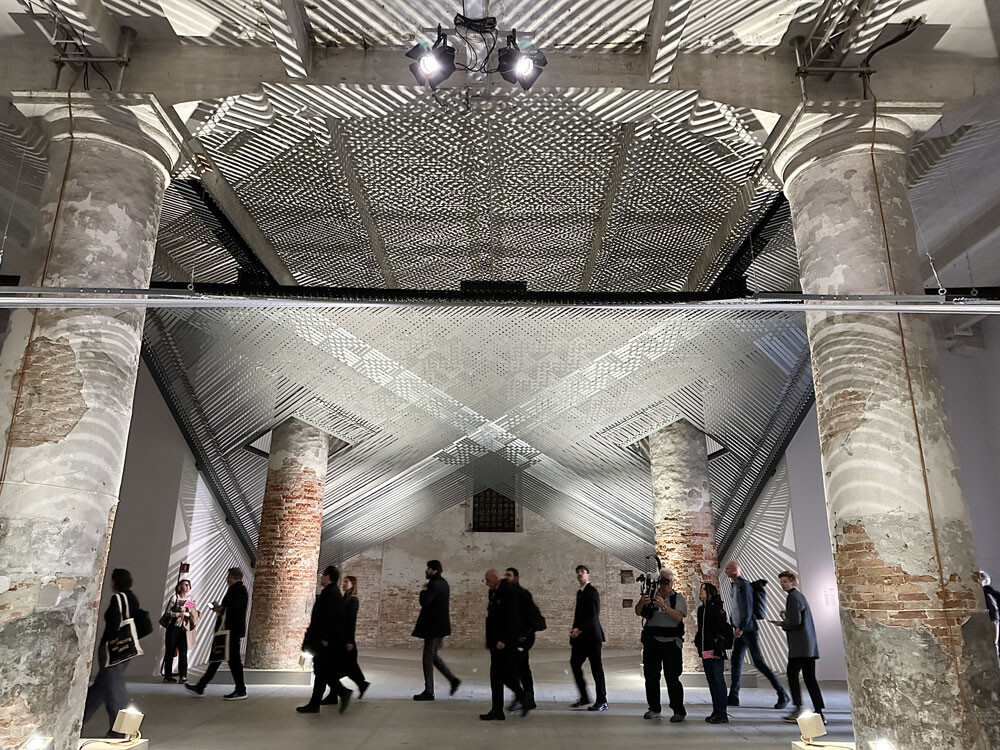
Mataaho Collective, Takapau. Photo: Helen Grace
The large-scale installation by Mataaho Collective (a collaboration by four Māori women, Erena Baker, Sarah Hudson, Bridget Reweti and Terri Te Tau) completes the Antipodean rout of Venice this year. A work of the simplest materials used to create monumental impact, Takapau is based on whariki takapau—finely woven floormats used on special occasions, such as births, weddings and tangihanga (funeral rites), to add mana or spiritual life force and healing power. This woven universe is one of the first works you pass under as you enter the main Arsenale exhibition. The installation effectively plays with the flow of light from exterior to interior space, illuminating the detailed complexity of the weave, which we see from below rather than from above.
Astutely positioned close to the entrance of the show, this masterwork is made from materials as basic as hi-vis polyester tie-downs, stainless steel buckles and J-hooks, transformed in the process of bringing a sense of ceremony to the overall exhibition, imbuing it and the world with the gift of mana. It is a work that visualises collective labour, materialising it as forcefully as possible. The achievement is all the more salutary because New Zealand/ Aotearoa chose not to represent itself at Venice this year for national budgetary reasons—and evidently, this wasn’t a bad decision.
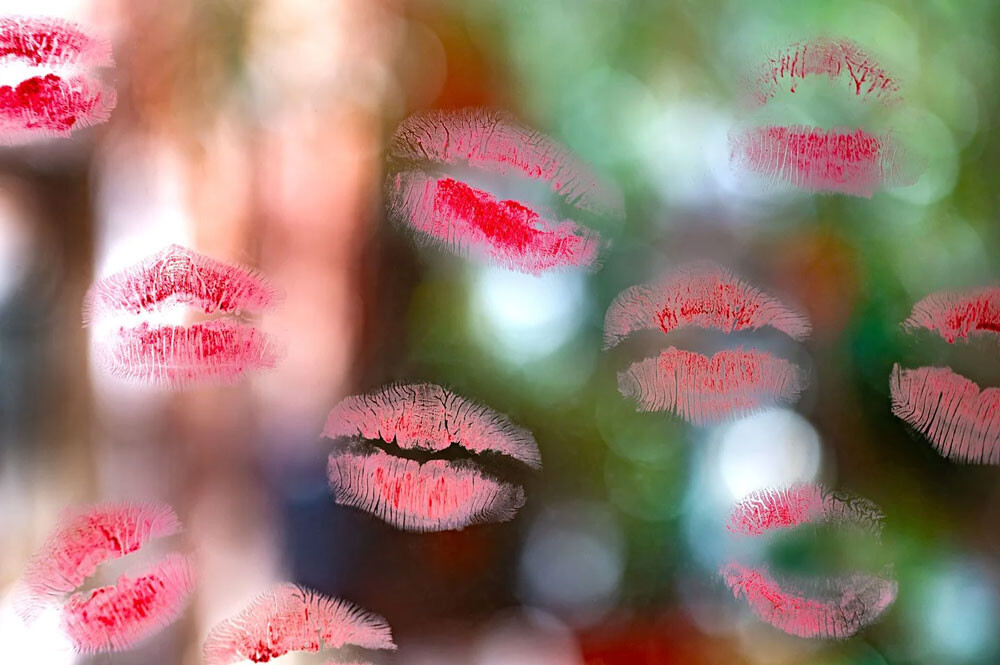
Maria Madeira, Kiss and Don’t Tell (2024) (detail). Exhibition view: Timor-Leste Pavilion at the 60th Venice Biennale, Foreigners Everywhere (20 April–24 November 2024). © Maria Madeira. Courtesy of the artist and Anna Schwartz Gallery, Melbourne. Photo: Cristiano Corte
Temporary Pavilions
Although old European nations dominate the Giardini, the art of new nations invigorates temporary pavilions all over the city. This is where the freshest energy resides, and the future is signalled—where the world presents the challenges of emergence in a series of “situations” and possibilities.
This year’s newest pavilion is Timor-Leste, with a delicate installation by Maria Madeira (curated by Natalie King) on the ground floor of Palazzo Ravà in San Polo. Twenty-five years after the nation first voted for its independence (and was brutally punished for it by Indonesia), the country’s Prime Minister, Xanana Gusmão, quietly stepped from a traghetto just beside Spazio Ravà to open the country’s first national pavilion at the Venice Biennale.
If this were the pavilion of France, Germany, or the US, a huge media scrum would surround the event, and the security detail would be extensive. Instead, we have this quite extraordinary occurrence in which “the father of our nation” (as described in the catalogue by Jorge Soares Cristavão, the exhibition’s commissioner) discreetly opens an art exhibition. This crucial performative part of an emergent phenomenon is precisely one of those “situations” Berlant has in mind: “a state of animated and animating suspension that forces itself on consciousness.”
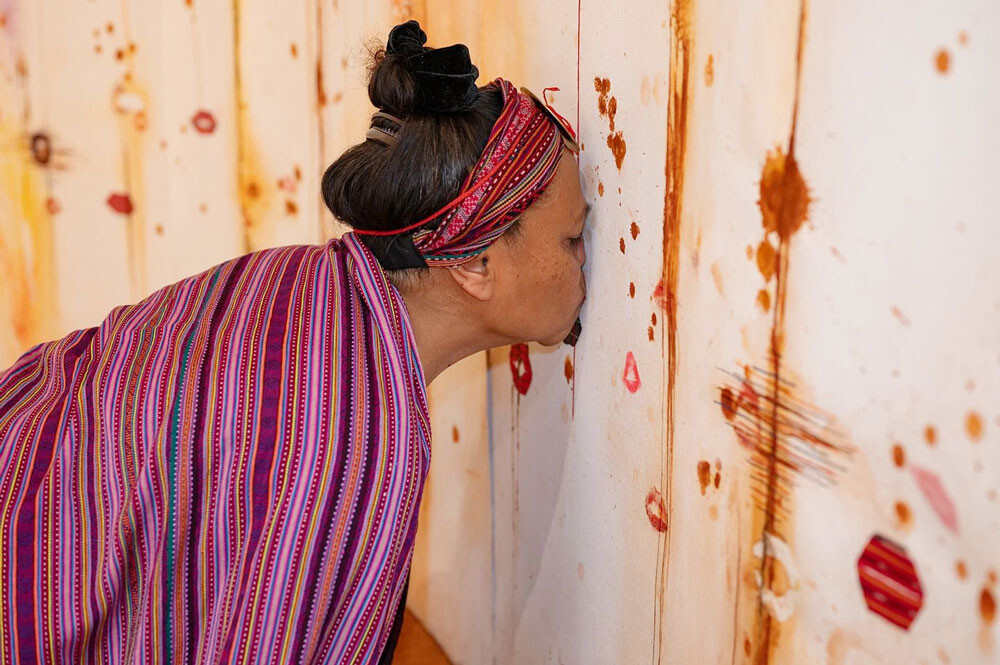
Maria Madeira, Kiss and Don’t Tell (2024) (detail). Exhibition view: Timor-Leste Pavilion at the 60th Venice Biennale, Foreigners Everywhere (20 April–24 November 2024). © Maria Madeira. Courtesy of the artist and Anna Schwartz Gallery, Melbourne. Photo: Cristiano Corte.
Maria Madeira’s installation, Kiss and Don’t Tell – another body of work using very basic materials—re-enacts some of the historical trauma and brutality of forming this (still de-colonizing) nation. The main panelled painting/collage in pigment, betel nut, tais, lipstick, and earth opens the work up to the outside, but its potency is enhanced in a very intelligently-installed video documentation of a performance at the heart of the work, placed in a narrow side-room, pressing the audience against the screen. And Maria Madeira enters the world stage.
Marcel Proust pictures Venice as a hub of diplomatic intrigue in his famous account written at the beginning of the First World War, right when the Biennale was establishing its place in the world. Today, the global stage is much larger than the confined, insular world of In Search of Lost Time’s Venetian hotel dining-room gossip. However, Venice is still a location of delicate behind-the-scenes negotiation. For example, a subtle politics of hierarchy and precedence played out in the opening of the Hong Kong pavilion, which had to wait until after China’s national pavilion, in the Arsenale, had officially opened.
Hong Kong occupies a position similar to that of Venice itself in the Biennale in having a pavilion separate from the nation’s official pavilion—and neither is listed as a national participant in the Art Guide. Taiwan is in a similar complicated position, resolved by cultural/diplomatic subtlety: both Hong Kong and Taiwan are listed as “Official Collateral Events,” granting them a distance, a kind of diplomatic immunity, while the title of the respective exhibitions within them displaces the geographic origin of both pavilions.
Trevor Yeung’s work for the Hong Kong pavilion, Courtyard of Attachments (curated by Olivia Chow), presents a set of fishless aquariums. Perfectly positioned on Campo della Tanna, opposite the main Arsenale entrance, the pavilion alludes to a fragile social ecology in which everything is visible but hidden. Water from the Grand Canal is drawn into the filtration system and fed back into the lagoon in endless renewal: a two-way process of intricate dialogue and exchange.
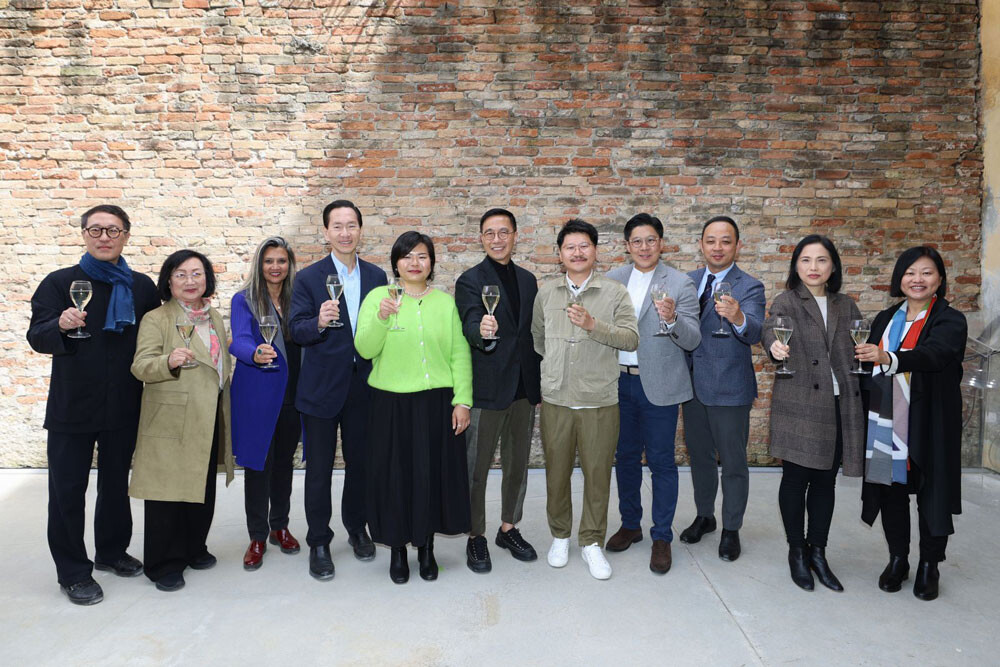
Opening Ceremony of Trevor Yeung: Courtyard of Attachments, Hong Kong in Venice. Photo: Winnie Yeung @ Visual Voices. Courtesy of M+, Hong Kong
M+, the relatively new—and extraordinarily popular—contemporary art museum, is a key sponsor of the pavilion, along with the official Hong Kong Arts Development Council. Official comments in speeches at the opening thank “our country” for what it enables—an audible adaptation to changing circumstances, seeming to echo Proust’s image of Venice as a hub of hidden and behind-the-scenes parleying of possibilities at a distance from the nation itself.
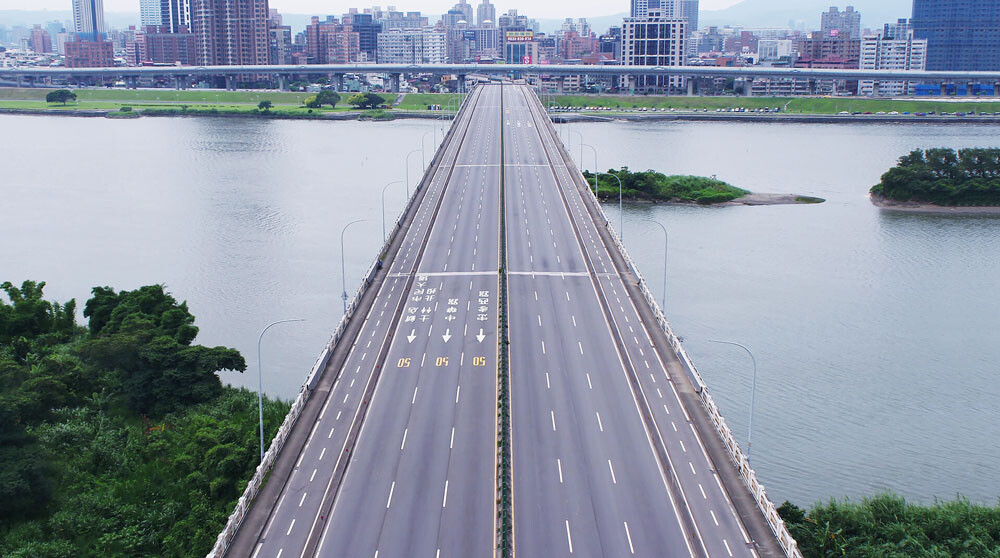
Still from Yuan Goang-Ming, Everyday Maneuver (2018) 5.57” single-channel video. Courtesy: the artist
The Taiwan pavilion in Palazzo delle Prigioni (the former Prigioni Nuove or New Prison) features pioneering media artist Yuan Guong-Ming’s exhibition, Everyday War (curated by Abby Chen), an installation of video works, drawings, and performance made since 2014, sponsored by Taipei Fine Arts Museum. The central work in this carefully composed suite loops between Everyday Manoeuvre (2018)—aerial footage of the deserted streets of Taipei during the annual Wanan Air Raid Drill when, for half an hour in the middle of the day, life comes to a standstill—and The 561st Hour of Occupation (2014)—footage of the chamber of Taiwan’s Legislative Yuan during the 2014 Sunflower Movement.

Still from Yuan Goang-Ming, The 561st Hour of Occupation, (2014) 5.56” single-channel video. Courtesy: the artist

Chitti Kasemkitvatana and Nakrob Moonmanas, Our Place in Their World, 2023. Two-channel video installation, colo u r, sound, 4:00 min. Installation view. Commissioned by Bangkok Art Biennale Foundation. Collection of the Artists. Courtesy the Artists; Bangkok Art Biennale. © Chitti Kasemkitvatana and Nakrob Moonmanas
The Thailand pavilion, another official Collateral Event, charts a different kind of distance for itself. The pavilion is housed in the sumptuously restored Palazzo Smith Mangilli Valmarana (former residence of the eighteenth-century British Consul, Joseph Smith—Canaletto’s dealer). Here, one finds the impressive group show The Spirits of Maritime Crossing, an iteration of the Bangkok Art Biennale curated by BAB’s director, Apinam Poshyananda, arguably the most astute cultural diplomats in Southeast Asia.
As the exhibition reveals, the modernising Thai King Chulalongkorn, also known as Rama V, was the first Asian monarch to visit the Venice Biennale, which he did in 1897 and 1907. His son, King Vajiravudh (also known as Rama VI), was so impressed by Venice that he translated Shakespeare’s Merchant of Venice into Thai, built the neo-Venetian Gothic Palace Villa Norasingh (now the Thai House of Parliament), and influenced the course of modern Thai art by bringing the Italian artist, Corrado Feroci, to Thailand in 1923.
The artists Chitti Kasemkitvatana and Nakrob Moonmanas present a two-channel video work, Our Place in Their World, which revises stories of Siamese travellers in Europe, surrounded by Neo-classical Graeco-Roman figures as elaborately framed murals. In another room, a collaborative video projection by Marina Abramović and Thai Classical Mask dance (Kohn) artist Pichet Klunchen achieves an uncanny effect in the relocation of a costumed Thai dancer to Venice—although Abramović’s sombre intonation has the sense of another lost European seeking redemption in the East.

Bouchra Khalili, Mapping Journey Project (2008–11)
Stranieri Ovunque—Foreigners Everywhere
Adriano Pedrosa’s curated show, the monumental Stranieri Ovunque–Foreigners Everywhere, fills the Arsenale and the Central Pavilion of the Giardini with the work of over three-hundred artists. Dazzling in its coherence (though not in everyone’s opinion), the show requires more than this brief summary. Highlights in the Arsenale include a selection of works reproducing Lina Bo Bardi’s 1950s redesign of museum display in MASP (the São Paulo Museum of Art, where Pedrosa is currently artistic director): Moroccan/French artist; Bouchra Khalili’s remarkable Mapping Journey Project (2008–11), in which she poignantly charts the passage to and within Europe of a group of illegal immigrants; and Disobedience Archive (1975–2023), Marco Scotini’s video collection of artistic practices and political action (“an archive of imaginaries”), presented in the form of a Zoetrope. London-based Italian artist Alessandra Ferrini’s Gaddafi in Rome (2022), in the Giardini Central Pavilion, looks at Italy’s north African colonialism through a photograph of a meeting between Gaddafi and Berlusconi in 2009. In an echo of this work, the very week of the 60th vernissage, Italian Prime Minister Giorgia Meloni signed accords with the Tunisian president Kais Saied, providing business credit and investment to enable Tunisia to stop illegal migration from reaching Europe.
Offsite, at S.a.L.E. Docks, I managed to catch a stunning conversation between the Yogyakarta-based activist collective Taring Padi and Charles Esche, director of Van Abbemuseum in Eindhoven, revisiting the huge controversy that had taken place at documenta XV in 2022. There, Taring Padi was accused of anti-semitism because of an anti-militarist banner work they had made, criticising the repressions of 1965–66 in Indonesia, in which many of their friends and family had been killed. The documenta project is still mired in the aftermath of that controversy. This discussion effectively reframed the event and, though unconnected with the Biennale, illuminated its overall theme, Stranieri Ovunque—Foreigners Everywhere, and the complexities of hospitality and of how guests are permitted to behave in a culture that has only the concept of the guest worker. (a Taring Padi exhibition has just closed at Griffith University Art Museum in Brisbane.)
Berlant’s sense of a “situation”—“a state of things in which something that will perhaps matter is unfolding” certainly applies to the 60th Venice Biennale. It is clearly filled with emergent phenomena: first Latin American curator, first Golden Lion for Australia and first for New Zealand/Aotearoa; first pavilions for Benin, Ethiopia, Tanzania, and Timor Leste. Jaded responses will declare again that art is done or overdone. But its beginnings are also visible around the edges, where new worlds—and imaginaries—form, despite the European civilisational project that increasingly excludes those outside its borders.
Helen Grace, born Gunditjmara Country, is a writer based on Wangal Country, Eora Nation.
